Contents
Foreword
Preface
Acknowledgments
About the Authors
Part I: Introduction
Chapter 1 Eclipse as a Rich Client Platform
1.1 Eclipse
1.2 The Eclipse Rich Client Platform
1.3 Eclipse RCP over the Years
1.4 Uses of RCP
1.5 Summary
1.6 Pointers
Chapter 2 Eclipse RCP Concepts
2.1 A Community of Plug-ins
2.2 Inside Plug-ins
2.3 Putting a System Together
2.4 OSGi Framework
2.5 Equinox
2.6 Standard Widget Toolkit (SWT)
2.7 JFace
2.8 UI Workbench
2.9 Summary
2.10 Pointers
Part II: RCP by Example
Chapter 3 Tutorial Introduction
3.1 What Is Hyperbola?
3.2 The Evolution of Hyperbola
3.3 Development Environment Installation
3.4 Sample Code
3.5 Target Platform Setup
3.6 Learning by Example
3.7 Summary
3.8 Pointers
Chapter 4 The Hyperbola Application
4.1 Hyperbola “Hello, World”
4.2 Tour of the Code
4.3 Running and Debugging
4.4 Summary
4.5 Pointers
Chapter 5 Starting the Hyperbola Prototype
5.1 Continuing from the Shell
5.2 Adding a Contacts View
5.3 The Chat Model
5.4 Filling in the Contacts View
5.5 Adding Images
5.6 Summary
5.7 Pointers
Chapter 6 Adding Actions
6.1 Adding to the Menus and Toolbar
6.2 Adding to the Status Line
6.3 System Tray Integration
6.4 Summary
6.5 Pointers
Chapter 7 Adding a Chat Editor
7.1 Views and Editors
7.2 Defining the Chat Editor
7.3 Checkpoint
7.4 Summary
7.5 Pointers
Chapter 8 Branding Hyperbola
8.1 Defining the Hyperbola Product
8.2 Window Images
8.3 Customizing the Launcher
8.4 Splash Screen
8.5 About Information
8.6 Summary
8.7 Pointers
Chapter 9 Packaging Hyperbola
9.1 Exporting Hyperbola
9.2 Exporting for Other Platforms
9.3 Summary
9.4 Pointers
Chapter 10 Messaging Support
10.1 Integrating a Third-Party Library
10.2 Refactoring the Model
10.3 Updating the UI
10.4 Chatting with Eliza
10.5 Summary
10.6 Pointers
Chapter 11 Adding a Login Dialog
11.1 Adding the Login Dialog
11.2 Remembering Login Settings
11.3 Adding Auto-login Preferences
11.4 Summary
11.5 Pointers
Chapter 12 Adding Key Bindings
12.1 Defining Commands
12.2 Checkpoint
12.3 Adding Key Bindings for Workbench Actions
12.4 Key Schemes
12.5 Keys Preference Page
12.6 Summary
12.7 Pointers
Chapter 13 Adding Help
13.1 Adding to the Target Platform
13.2 Configuring the Help Plug-ins
13.3 Add the Help Action
13.4 Adding Help Content
13.5 Help Content Structure
13.6 Infopops or F1 Help
13.7 Exporting Plug-ins with Help
13.8 Summary
13.9 Pointers
Chapter 14 Adding Software Management
14.1 Getting p2
14.2 Features
14.3 Defining Features
14.4 Branding Features
14.5 Updating Hyperbola
14.6 Customizing the p2 UI
14.7 Defining Categories
14.8 Automatic Updates
14.9 Summary
14.10 Pointers
Part III: The Workbench
Chapter 15 Workbench Advisors
15.1 Workbench Advisors
15.2 WorkbenchAdvisor
15.3 WorkbenchWindowAdvisor
15.4 ActionBarAdvisor
15.5 Workbench Overview
15.6 Summary
15.7 Pointers
Chapter 16 Perspectives, Views, and Editors
16.1 Perspectives
16.2 Views and Editors
16.3 Multiple Workbench Windows
16.4 Drag and Drop with Editors
16.5 Summary
16.6 Pointers
Chapter 17 Actions
17.1 Overview
17.2 Declarative Actions in Hyperbola
17.3 Standard Workbench Actions
17.4 Retargetable Actions
17.5 Consolidating Declarative Actions
17.6 Toolbar Action Tricks
17.7 Adding Contributions to the Status Line
17.8 Reporting Progress
17.9 Summary
Chapter 18 Commands
18.1 The Problem with Actions
18.2 Commands
18.3 Contributions
18.4 Handlers
18.5 Summary
18.6 Pointers
Chapter 19 Customizing Workbench Windows
19.1 Customization Defined
19.2 Customizing a Workbench Window
19.3 Custom Window Shapes
19.4 Summary
19.5 Pointers
Chapter 20 Customizing the Presentation of Views and Editors
20.1 Presentations
20.2 Sample Presentations
20.3 Writing a Presentation
20.4 Example Presentation
20.5 Summary
20.6 Pointers
Part IV: Development Processes
Chapter 21 Installing and Updating with p2
21.1 The Roles of p2
21.2 Architecture
21.3 Using the p2 API
21.4 Metadata Management
21.5 Repository Management
21.6 Installation Management
21.7 Summary
21.8 Pointers
Chapter 22 Dynamic Plug-ins
22.1 Making Hyperbola Dynamic
22.2 Dynamic Challenges
22.3 Dynamic Awareness
22.4 Dynamic Enablement
22.5 Summary
22.6 Pointers
Chapter 23 RCP Everywhere
23.1 Sample Code
23.2 The Scenario
23.3 Product Configurations
23.4 Hyperbola Product Configurations
23.5 Code Structure
23.6 Designing a Platform
23.7 RCP-Friendly Plug-ins
23.8 Summary
23.9 Pointers
Chapter 24 Building Hyperbola
24.1 What Is PDE Build?
24.2 Plug-in build.properties
24.3 Setting Up a Builder
24.4 Running the Builder
24.5 Tweaking the Build
24.6 Building Add-on Features
24.7 Assembling Multiple Configurations
24.8 Summary
Chapter 25 Testing
25.1 Making Hyperbola Testable
25.2 Unit Testing Hyperbola
25.3 User Interface Testing Hyperbola
25.4 Summary
25.5 Pointers
Chapter 26 The Last Mile
26.1 Archives
26.2 Native Installers
26.3 p2 Installer
26.4 Java Web Start (JNLP)
26.5 Initializing the Install
26.6 Preinitialized Configurations
26.7 Multiuser Install Scenarios
26.8 Summary
26.9 Pointers
Part V: Reference
Chapter 27 OSGi
27.1 OSGi and the Eclipse Runtime
27.2 The Shape of Plug-ins
27.3 Fragments
27.4 Version Numbering
27.5 Services
27.6 Bundle Lifecycle
27.7 Early Activation
27.8 Lazy Activation
27.9 Data Areas
27.10 Summary
27.11 Pointers
Chapter 28 Eclipse Databinding
28.1 Getting Started
28.2 Why Databinding?
28.3 Architecture
28.4 Observables
28.5 Properties
28.6 Bindings
28.7 Summary
28.8 Pointers
Chapter 29 Eclipse Ecosystem
29.1 Where to Find Plug-ins
29.2 Eclipse Platform Plug-ins
29.3 Product Introduction
29.4 Resources
29.5 Text Editing
29.6 Consoles
29.7 Variables
29.8 Outline and Property Views
29.9 Forms
29.10 Browser
29.11 The Common Navigator Framework
29.12 Declarative Services
29.13 Summary
Index
A
B
C
D
E
F
G
H
I
J
K
L
M
N
O
P
Q
R
S
T
U
V
W
X
Z
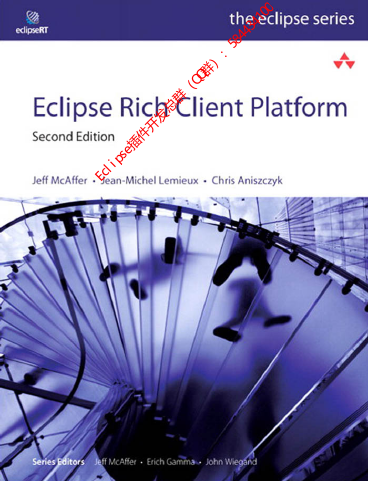
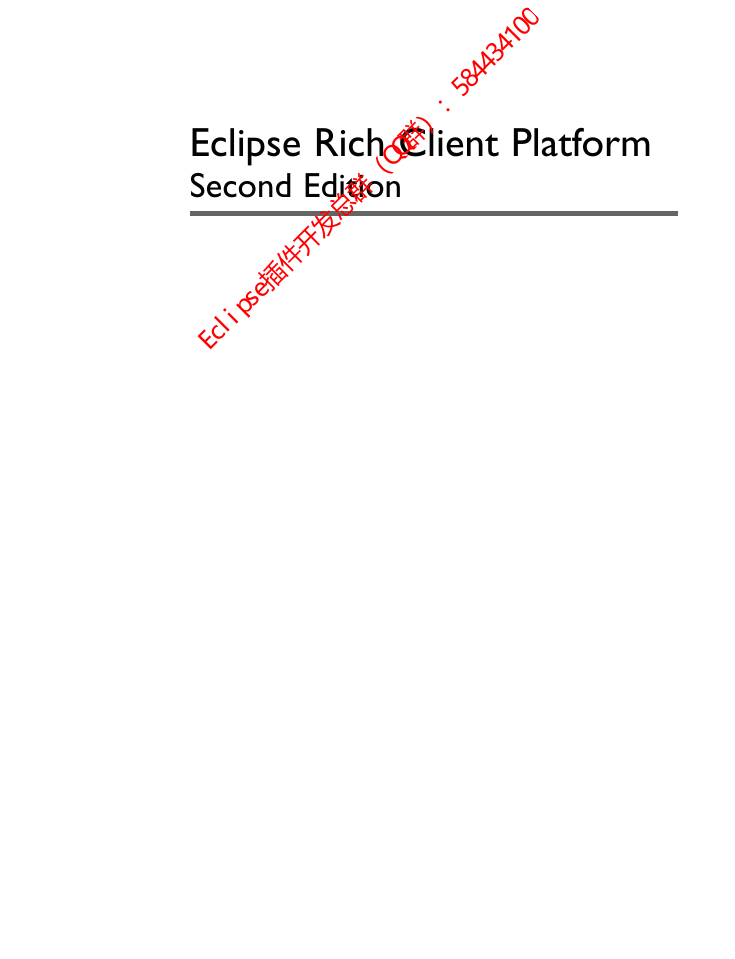

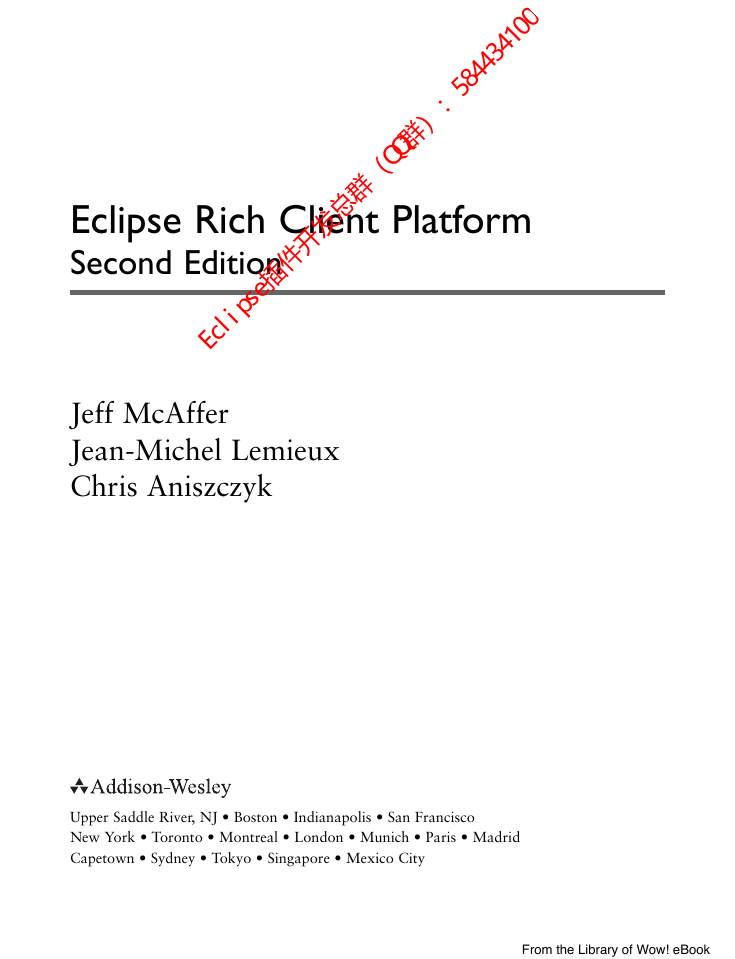
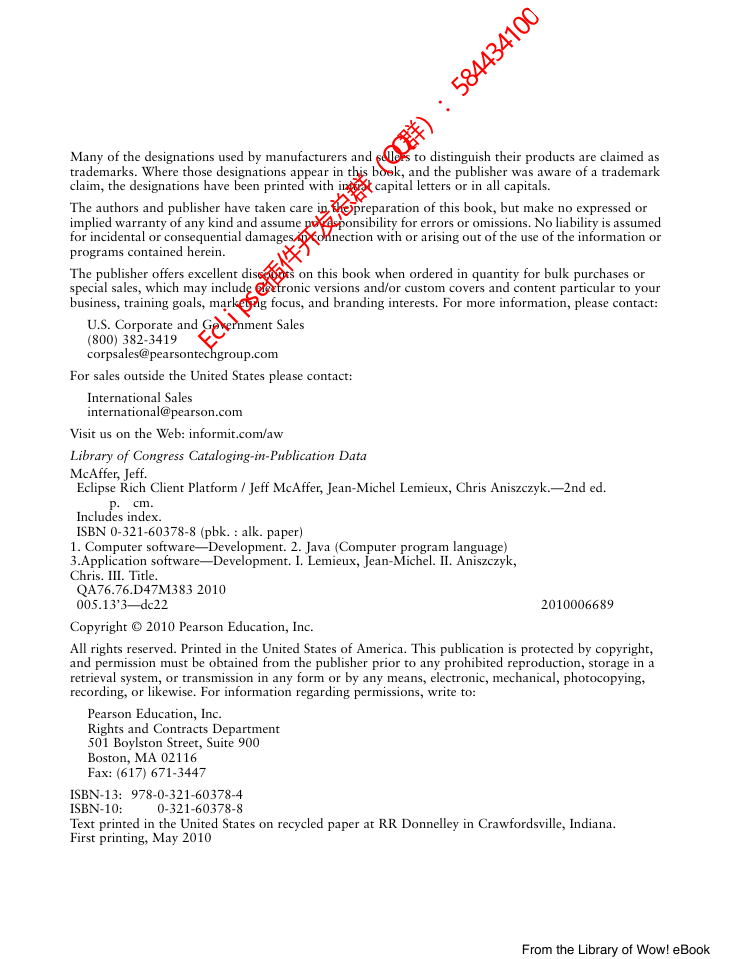

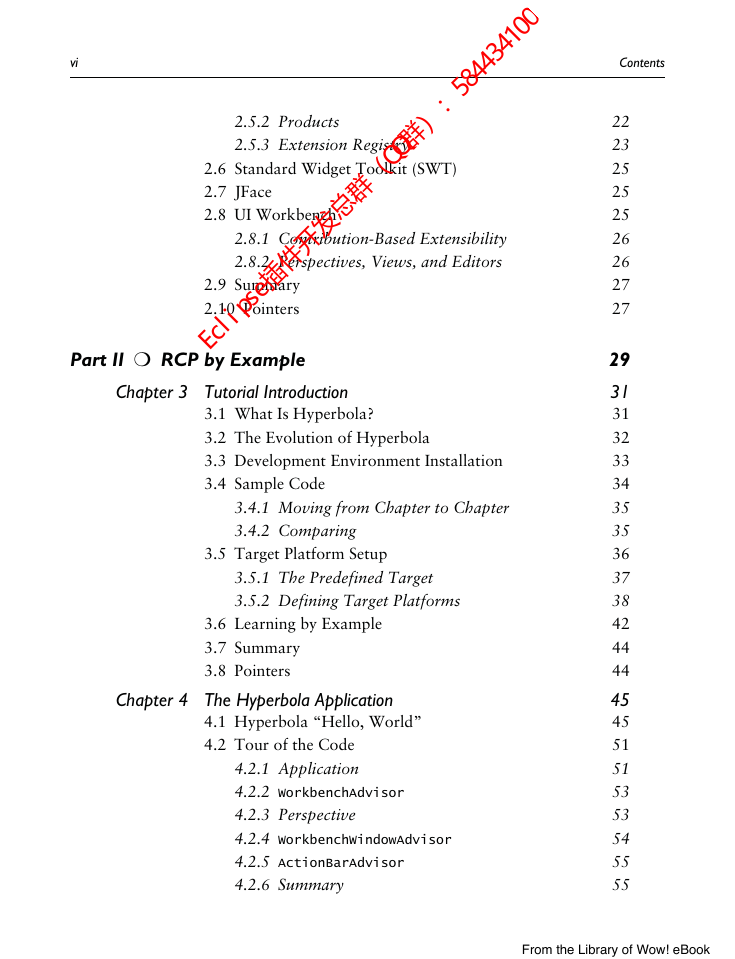
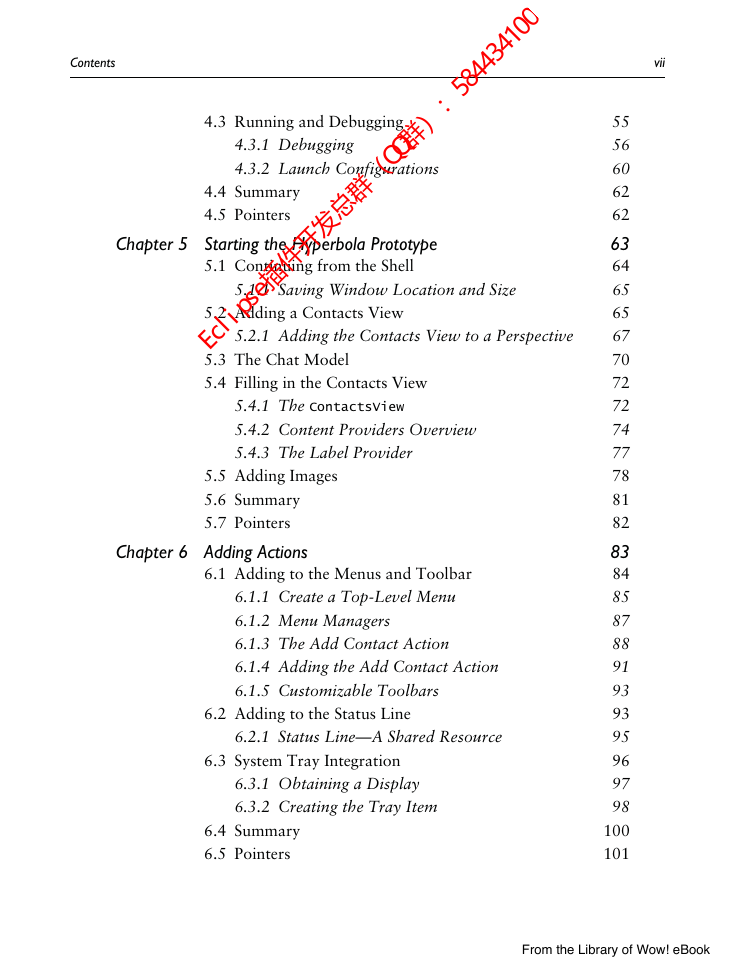








 2023年江西萍乡中考道德与法治真题及答案.doc
2023年江西萍乡中考道德与法治真题及答案.doc 2012年重庆南川中考生物真题及答案.doc
2012年重庆南川中考生物真题及答案.doc 2013年江西师范大学地理学综合及文艺理论基础考研真题.doc
2013年江西师范大学地理学综合及文艺理论基础考研真题.doc 2020年四川甘孜小升初语文真题及答案I卷.doc
2020年四川甘孜小升初语文真题及答案I卷.doc 2020年注册岩土工程师专业基础考试真题及答案.doc
2020年注册岩土工程师专业基础考试真题及答案.doc 2023-2024学年福建省厦门市九年级上学期数学月考试题及答案.doc
2023-2024学年福建省厦门市九年级上学期数学月考试题及答案.doc 2021-2022学年辽宁省沈阳市大东区九年级上学期语文期末试题及答案.doc
2021-2022学年辽宁省沈阳市大东区九年级上学期语文期末试题及答案.doc 2022-2023学年北京东城区初三第一学期物理期末试卷及答案.doc
2022-2023学年北京东城区初三第一学期物理期末试卷及答案.doc 2018上半年江西教师资格初中地理学科知识与教学能力真题及答案.doc
2018上半年江西教师资格初中地理学科知识与教学能力真题及答案.doc 2012年河北国家公务员申论考试真题及答案-省级.doc
2012年河北国家公务员申论考试真题及答案-省级.doc 2020-2021学年江苏省扬州市江都区邵樊片九年级上学期数学第一次质量检测试题及答案.doc
2020-2021学年江苏省扬州市江都区邵樊片九年级上学期数学第一次质量检测试题及答案.doc 2022下半年黑龙江教师资格证中学综合素质真题及答案.doc
2022下半年黑龙江教师资格证中学综合素质真题及答案.doc